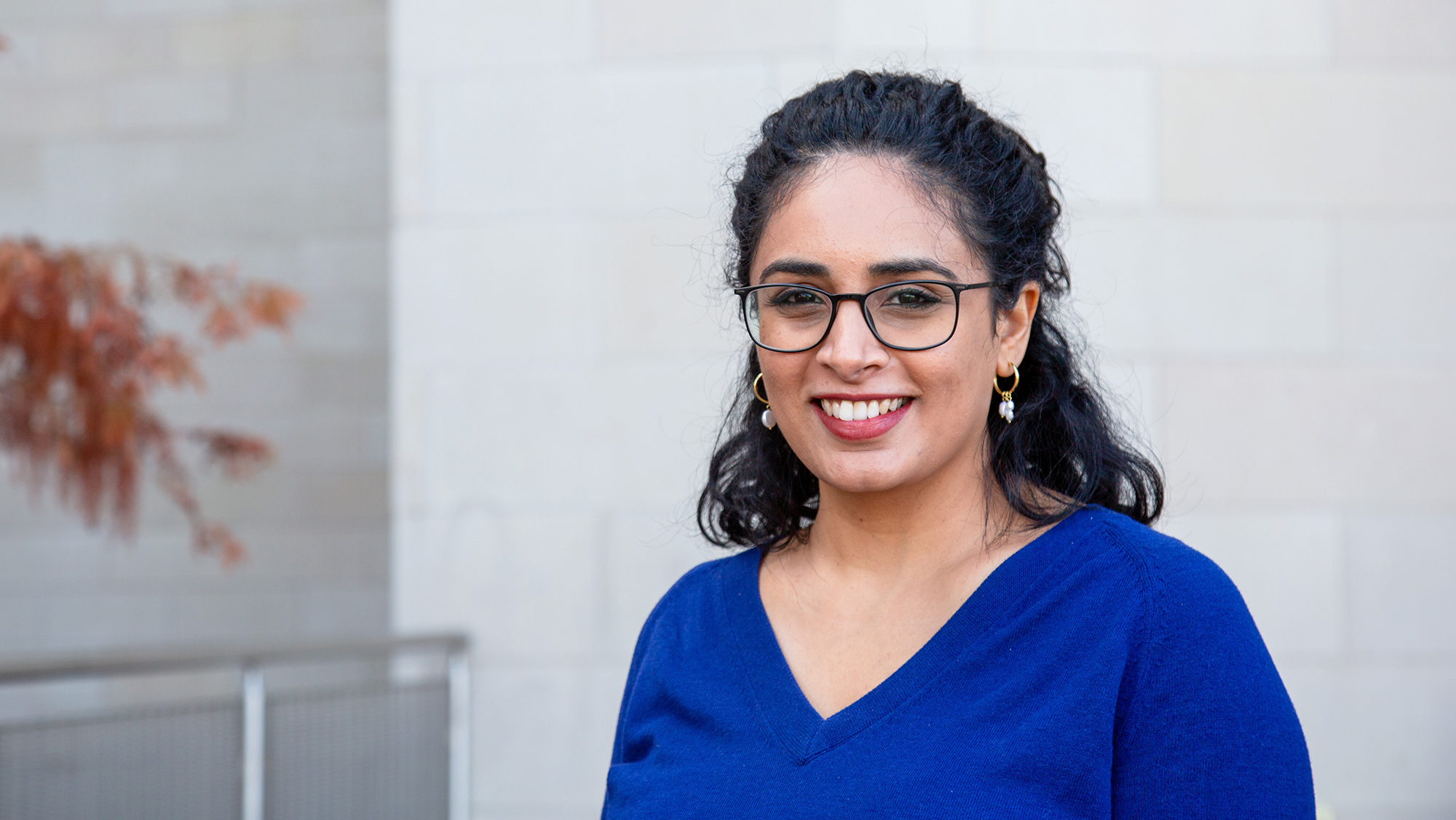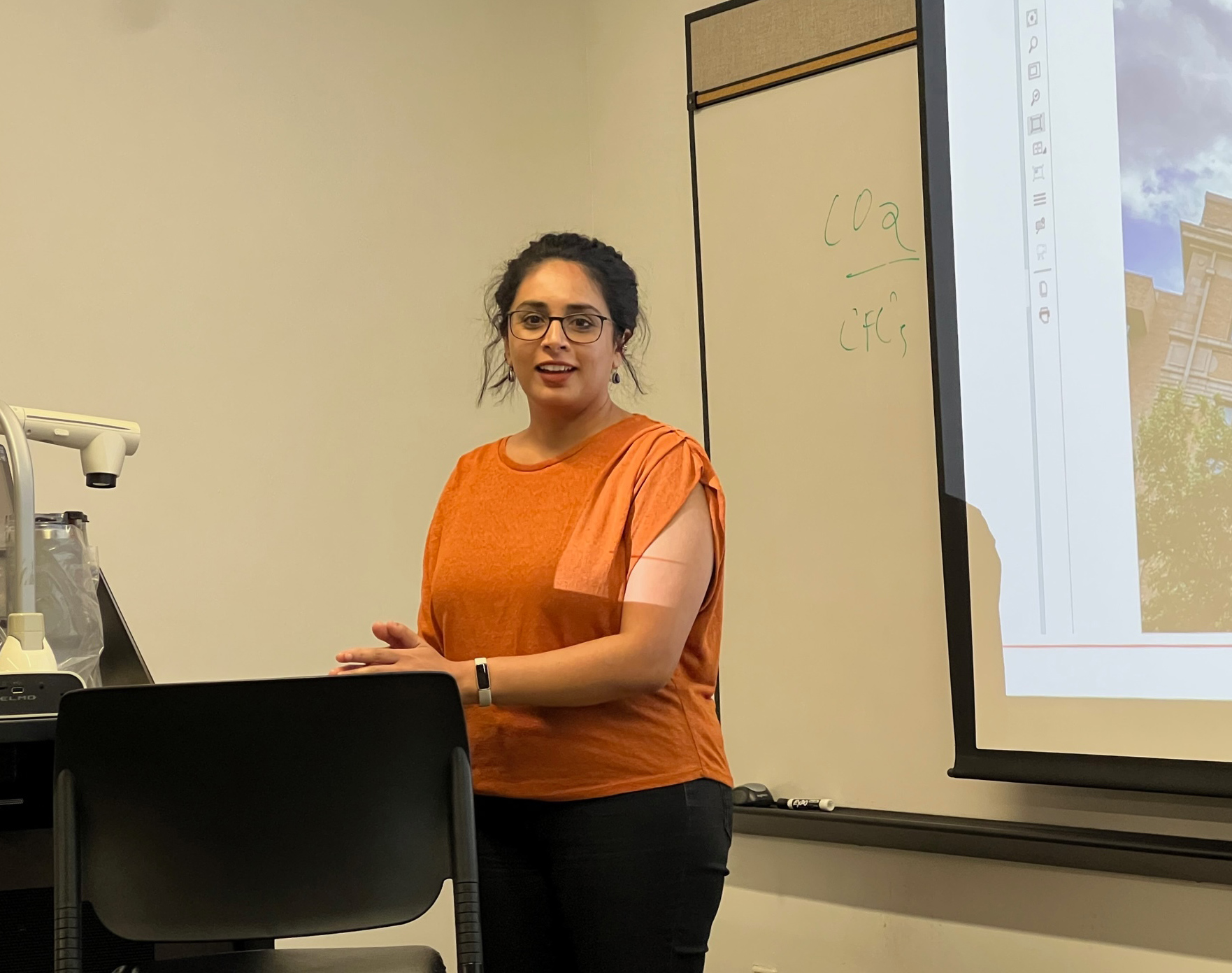
Energy analyst by day and part-time doctoral student by night, Sai Kapalayam has balanced working full-time while attending graduate school for two years now.
Kapalayam is an energy analyst at Texas A&M University's Utilities and Energy Services and a part-time graduate student in the Department of Multidisciplinary Engineering's Doctor of Engineering program. Her research specializes in accelerating sustainable and equitable development by translating the United Nations Sustainable Development Goals to be relevant at a city level and co-creating policies and programs through multi-sectoral stakeholder collaboration.
Kapalayam, who hails from India, came to the United States 13 years ago for her first graduate program — a master's degree in industrial engineering with a concentration in energy management from Oklahoma State University. After receiving her degree, she worked on building energy efficiency at Oklahoma State's Industrial Assessment Center and the Federal Aviation Administration before joining Texas A&M's Utilities and Energy Services, where she is entering her 10th year.
Her experience includes modeling energy consumption, performing energy and water audits, designing energy and water conservation projects, and measuring and verifying implemented projects. While Kapalayam enjoyed managing building energy efficiency, she wanted to pursue a leadership position and broaden her knowledge in the field of renewable energy, sustainability, and the interconnectedness of energy with other resources.
Kapalayam sought out graduate programs with a practical component where she could learn core engineering concepts and organizational management to help her become an exemplary sustainability leader.
What I found most compelling, however, was how the department has designed the Doctor of Engineering program with working professionals in mind.
She concluded that Texas A&M's multidisciplinary Doctor of Engineering Degree was the best at providing engineering, design and management knowledge. Additionally, the program requires students to apply this knowledge in real time during an internship project rather than completing a traditional doctoral thesis.
"This graduate program was exactly what I was looking for,” Kapalayam said. “As a Texas A&M employee, I was also eligible for scholarships, further motivating me to apply. What I found most compelling, however, was how the department has designed the Doctor of Engineering program with working professionals in mind."
Kapalayam’s internship project focuses on advancing sustainable development in San Antonio, Texas. She works with the multidisciplinary engineering department, Texas A&M Energy Institute and the city’s leaders to localize the United Nations Sustainable Development Goals through evidence-based decision-making, integrated analysis and multi-stakeholder collaborations. Localizing global sustainability goals allows local leaders to promote holistic and coherent cross-sectoral policies, create socio-economic pathways for the development of equitable communities and develop a sustainability framework that aligns with the national goals from a bottom-up approach.
Multidisciplinary engineering also provides Kapalayam with the rare opportunity to learn from various engineering disciplines simultaneously. Her coursework last year included biological and agricultural engineering classes about water-energy-food nexus, a civil engineering class on water resources planning and management, and a management class on leadership in organizations.

"I'm constantly learning how one field of engineering interacts with the other," she said. "It enables me to look at the world from a different and better perspective."
Kapalayam has found the program highly beneficial in providing technical and non-technical competence to students, regardless of whether they are studying full-time or part-time.
"Not only is the program flexible, but the department's faculty and staff members are some of the kindest, highly talented and most understanding people I have ever met," she said. "They have guided me through every step of my past four semesters in this program."
With a nine-year gap between her master's degree and applying for the Doctor of Engineering program, she found returning to school a unique challenge. Kapalyam needed to re-learn how to balance class time with her work schedule, work on assignments and study for exams. However, her non-traditional timeline meant that she entered the program with nine years of professional experience working on a team, which immensely prepared her to work on group projects and communicate well with the students and faculty.
"I am delighted to be a part of the Doctor of Engineering program," Kapalyam said. "It is a great opportunity for full-time employees to continue studying and earn professional advancement. I never thought I would go to school again, but I've found it highly rewarding in all aspects — academically, professionally and personally. Anyone interested in returning to school while continuing to work should consider this fantastic program."